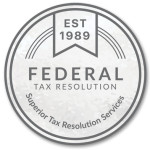Blog > Student Loans amp Debt Forgiveness > PPP LOAN FORGIVENESS RULES
PPP LOAN FORGIVENESS RULES
July 9, 2021 - Douglas Myser
PPP loan forgiveness rules. Loan forgiveness requirements are the same for both the first and second batch of Payroll Protection Program payment loans. To receive full loan forgiveness, employers need to maintain staffing and compensation levels during the covered period. Additiionally, money from the PPP loan must be spent on eligible expenses during the covered period. In order for the loan to be fully forgiven, at least 60% must be spent on payroll costs. Business owners receiving a first or second draw loan can opt for a covered period from eight to 24 weeks. PPP loan forgiveness rules.
Expenses that are eligible for forgiveness. Eligible expenses were originally limited to payroll and operating costs, but the coronavirus relief bill passed in December 2020 expanded the list to include supplier costs, expenses related to health and safety costs, expenses related to health and safety enhancements and some property damage. The following types of expenses are allowed.
Payroll costs, which includes all wages paid, including tips, commissions, and bonuses as well employer paid benefits such as insurance, sick leave, and retirement contributions. Compensation for employees earning more than $100,000 per year are not eligible. Operating costs such as utilities, business software, rent, mortgage payments, accounting services. To find out if IRS Tax Resolution is included in eligible expenses call. Supplier costs, such as goods essential to operating a business are included. Purchase orders for perishable goods made the covered period are also included.
Supplier costs such as the costs of goods essential to the operation of a business are allowed. Purchase orders for perishable goods are also allowed during the covered period of the loan. Property damage which is for repairs for damage to loss due to looting due to public disturbances in 2020. Costs covered by insurance are not covered expenses. Worker protection needed due to the COVID-19 health crisis is also covered. Protection equipment, barriers, and any other equipment that was needed to fend off the impact of the COVID health crisis is allowed under the regulations.
